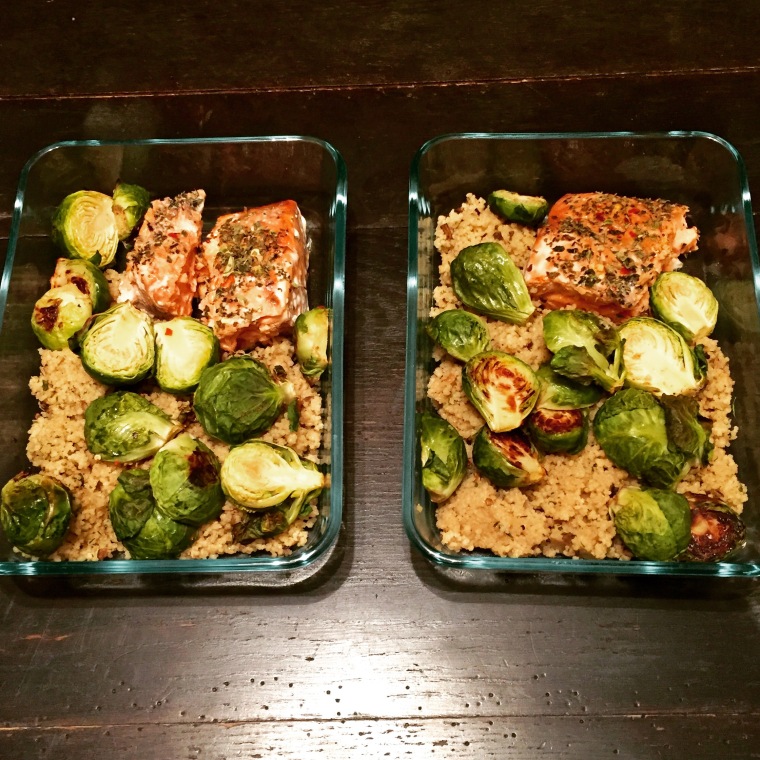When it comes to nutrition advice, by now you’ve probably heard the snazzy saying “eat a variety in moderation.” Or, my personal favorite version (curtesy of my high school teacher), “everything (legal) in moderation.”
But what does “moderation” mean?

Giving nutrition advice is a double-edged sword. One, we want the advice to come off short and catchy in hopes that people will remember and abide by it. Unfortunately, simplifying can lead to misinterpretation.
In reality, the message would be something like, “eat a variety of nutrient-dense foods, including mostly fruits, vegetables, and whole-grains, and then choose lean protein, like chicken breast, eggs, beans, nuts, legumes, etc., and don’t forget you can also have some dairy products, like low-fat yogurt, milk, cheese, but life would suck without cake, so every once in awhile eat that piece of cake, just don’t eat cake every single day.”
Who would ever want to read that? That looks like a whole bunch of words.
So let’s break down what “moderation” means. Moderation looks different depending on who you are, making it tricky to define. The dictionary definition is something like “the avoidance of excess or extremes.”
When it comes to food, my definition of moderation is based off of a few key bullet points:
- Eat what feels good: Veggies, fruits, whole-grains (brown rice, whole-wheat couscous/pasta), lean protein (eggs, salmon, chicken breast, beans) and yogurt power my body through the day and I feel nourished after eating these types of foods. These foods form the basis of what I eat. Depending on your personal preferences, choose a few foods you like to eat from these food groups and create meals around them. When a treat pops up that I really want, I’ll eat it and stick to a serving size.



- Nothing is off-limits: Knowing that I can eat anything I want means there are no “special/untouchable” foods. When you hold a food on a pedestal and deprive yourself of eating it, chances are you will eventually succumb to your craving and overindulge on that food. Or, you may stick to your rules and not eat the sacred food and instead overeat other foods in place of what you truly want.
EX: Full-fat ice cream is off-limits. So, I purchase some reduced-fat version of ice cream/sorbet/diet food version instead and eat the entire container because it’s “better” for you than the full-fat version and I’m proud of myself for not buying the off-limits ice cream. But, then I just ate the entire container. Meanwhile, if I brought the full-fat version and served myself a serving size in a bowl (no eating out of the container), I would have satisfied my craving and not binged on something less satisfying.


- Seconds are okay: When serving meals, portion out what a single serving looks like because if you’re still hungry you can go back for seconds. This will help preserve the basis of moderation, which means not too little and not too much of something.

Moderation can be an intangible concept, but once you create your own version of what moderation looks like to you, it can be an enjoyable way of eating. Keeping the basis of what you eat grounded in nutritious foods, of course.
Eat Responsibly!
~~~~~~~~~~~~~~~~~~~~~~~~~~~~~~~~~~~~~~~~~~~~~~~~~~~~~~~~~~~~~~~~~~~~~~~~~
What does “moderation” look like to you?
What are your key bullet points for “moderation?”


Hello!
Pleasure to meet you and thank you for taking time to visit my blog page and having a follow, I appreciate the support! all the food looks so delicious!
Shay-lon
LikeLike
Thank you!! 🙂
LikeLiked by 1 person
Very important post. This is the same type of philosophy I promote as well. I teach people to eat, exercise, etc… in a manner that can be MAINTAINED for the next 40 years. Starting with an UNrealistic game plan that (at best) achieves SHORT TERM changes is a formula for recurring failure. Teaching oneself how to include ALL foods enjoyed REALISTICALLY makes the process achievable. Teaching oneself how to exercise with a frequency, intensity and duration that can also be REALISTICALLY maintained is a key to LONG TERM SUCCESS. The one concept people need to recognize is that LONG TERM CHANGE is produced SLOWLY through patience and persistence. Keep up the good work!
LikeLiked by 1 person
Thank you! Very glad to hear you’re also a supporter of variety in moderation. I definitely agree, there are too many “quick fix diets/workouts” out there that lure people in, but are impossible to be maintained. Small changes truly add up to big pay-offs, plus they’re much easier to adopt :).
LikeLiked by 1 person